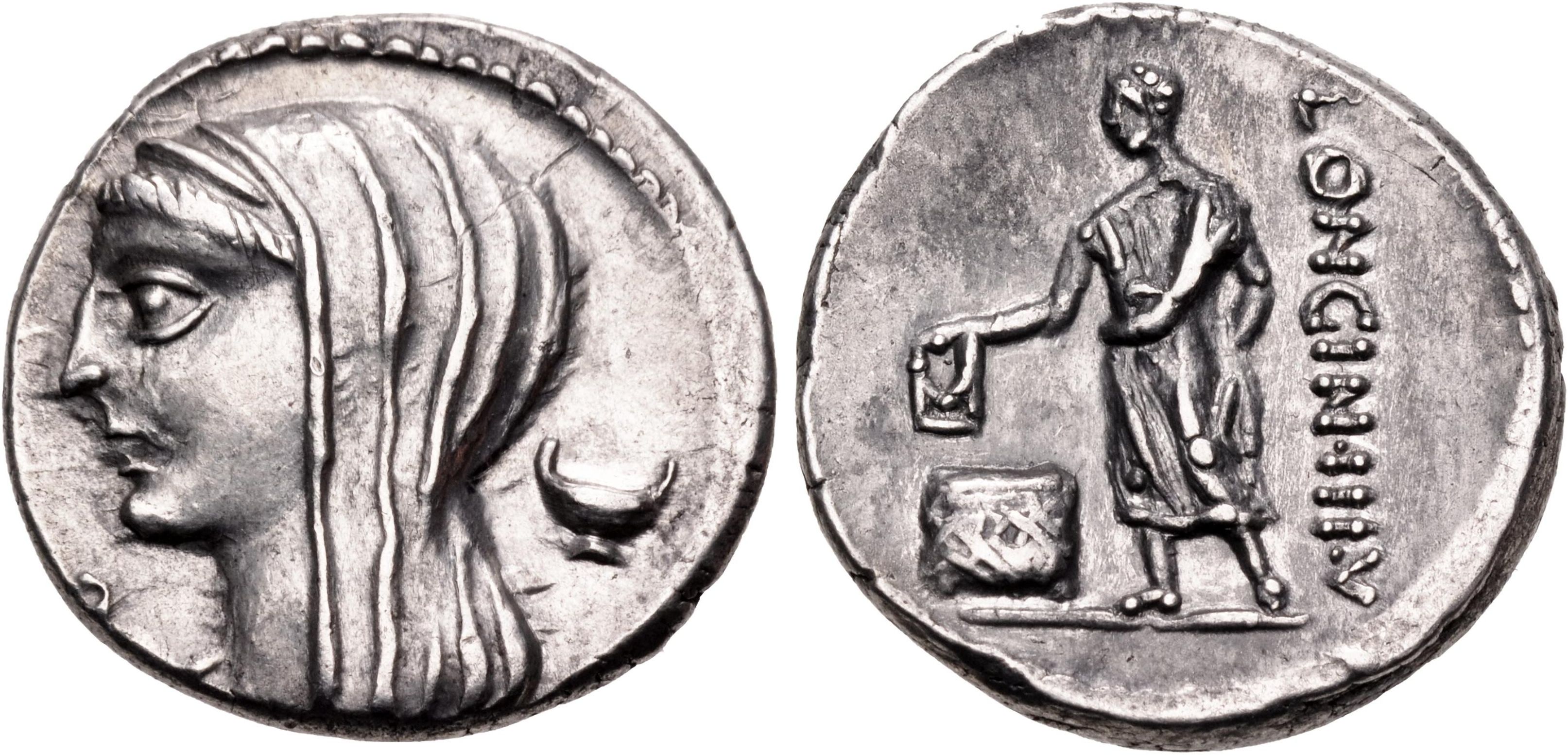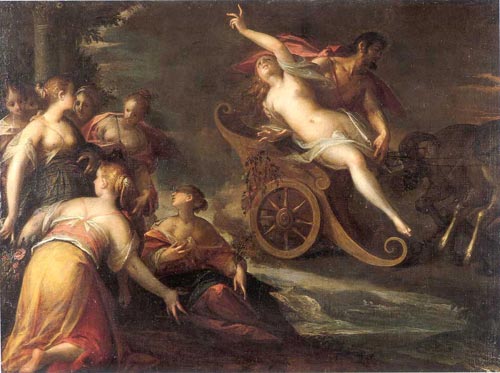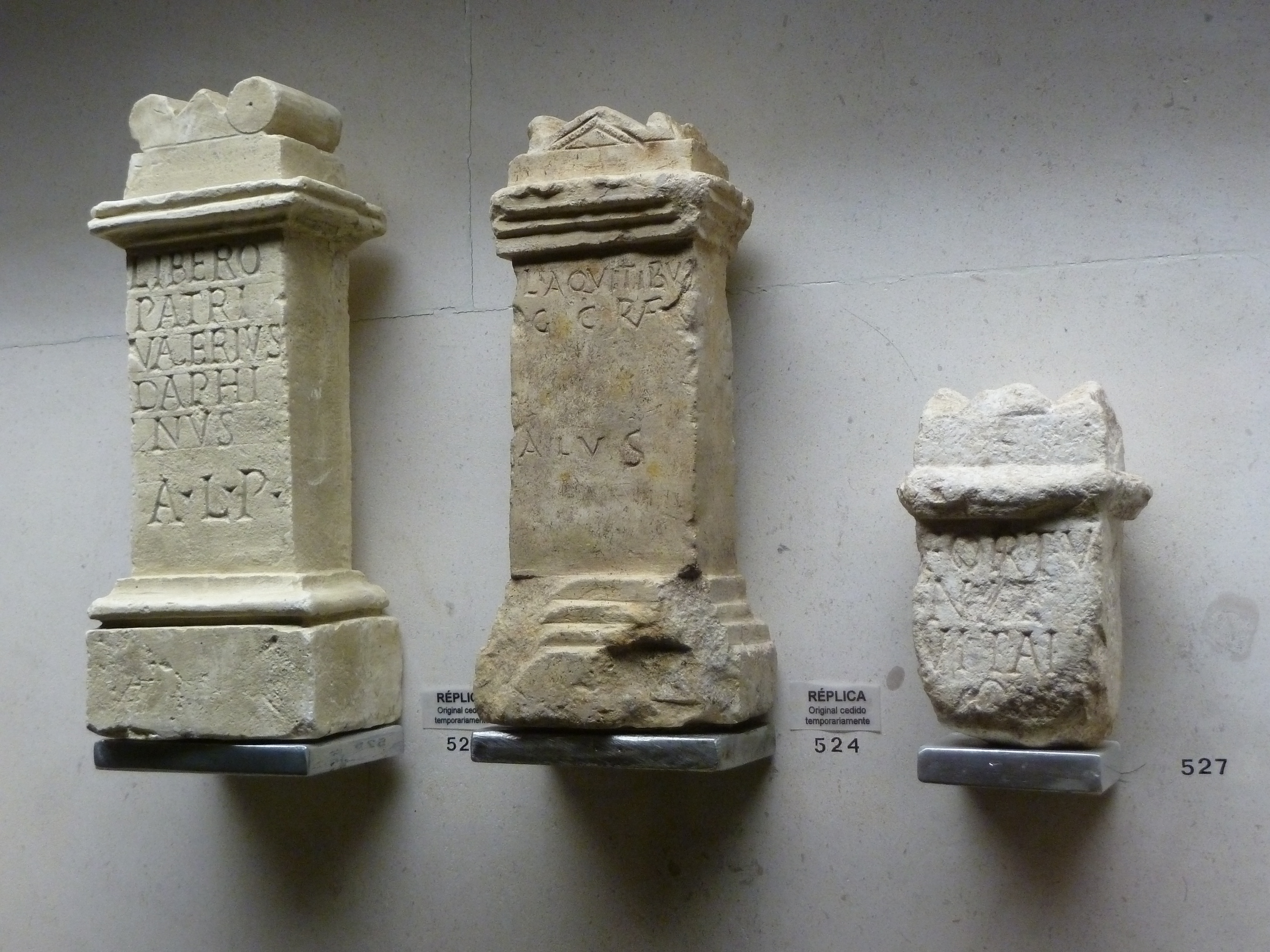|
Cassii
The gens Cassia was a Roman family of great antiquity. The earliest members of this gens appearing in history may have been patrician, but all those appearing in later times were plebeians. The first of the Cassii to obtain the consulship was Spurius Cassius Vecellinus, in 502 BC. He proposed the first agrarian law, for which he was charged with aspiring to make himself king, and put to death by the patrician nobility. The Cassii were amongst the most prominent families of the later Republic, and they frequently held high office, lasting well into imperial times. Among their namesakes are the Via Cassia, the road to Arretium, and the village of Cassianum Hirpinum, originally an estate belonging to one of this family in the country of the Hirpini.''Dictionary of Greek and Roman Biography and Mythology'', vol. I, pp. 621, 622 ("Cassia Gens"). Their most famous member is Gaius Cassius Longinus, an assassin of Julius Caesar alongside Brutus. Origin A possible clue to the o ... [...More Info...] [...Related Items...] OR: [Wikipedia] [Google] [Baidu] |
Spurius Cassius Vecellinus
Spurius Cassius Vecellinus or Vicellinus (died 485 BC) was one of the most distinguished men of the early Roman Republic. He was three times consul, and celebrated two triumphs. He was the first ''magister equitum'', and the author of the first agrarian law. The year following his last consulship, he was accused of aiming at regal power, and was put to death by the patricians. Background His surname variously appears as Vecellinus, Vicellinus, and Viscellinus. The latter has been shown to be incorrect, and Vecellinus is usually preferred. The otherwise unattested name may be a reference to a Mount Vecilius mentioned by Livy. According to one tradition, Cassius' father was still living and hale at the time of his death. If this were the case, it would be difficult to place Cassius' birth much earlier than 540 or 535 BC. Cassius also left behind him three sons, whose names have not been preserved. It is believed that the original Cassii were patricians, although the later members ... [...More Info...] [...Related Items...] OR: [Wikipedia] [Google] [Baidu] |
Gaius Cassius Longinus
Gaius Cassius Longinus (c. 86 BC – 3 October 42 BC) was a Roman senator and general best known as a leading instigator of the plot to assassinate Julius Caesar on 15 March 44 BC. He was the brother-in-law of Brutus, another leader of the conspiracy. He commanded troops with Brutus during the Battle of Philippi against the combined forces of Mark Antony and Octavian, Caesar's former supporters, and committed suicide after being defeated by Mark Antony. Cassius was elected as Tribune of the plebs in 49 BC. He opposed Caesar, and eventually he commanded a fleet against him during Caesar's Civil War: after Caesar defeated Pompey in the Battle of Pharsalus, Caesar overtook Cassius and forced him to surrender. After Caesar's death, Cassius fled to the East, where he amassed an army of twelve legions. He was supported and made Governor by the Senate. Later he and Brutus marched west against the allies of the Second Triumvirate. He followed the teachings of the philosopher ... [...More Info...] [...Related Items...] OR: [Wikipedia] [Google] [Baidu] |
Ancient Rome
In modern historiography, ancient Rome refers to Roman civilisation from the founding of the city of Rome in the 8th century BC to the collapse of the Western Roman Empire in the 5th century AD. It encompasses the Roman Kingdom (753–509 BC), Roman Republic (509–27 BC) and Roman Empire (27 BC–476 AD) until the fall of the western empire. Ancient Rome began as an Italic settlement, traditionally dated to 753 BC, beside the River Tiber in the Italian Peninsula. The settlement grew into the city and polity of Rome, and came to control its neighbours through a combination of treaties and military strength. It eventually dominated the Italian Peninsula, assimilated the Greek culture of southern Italy (Magna Grecia) and the Etruscan culture and acquired an Empire that took in much of Europe and the lands and peoples surrounding the Mediterranean Sea. It was among the largest empires in the ancient world, with an estimated 50 to 90 million inhabitants, roughly ... [...More Info...] [...Related Items...] OR: [Wikipedia] [Google] [Baidu] |
Second Punic War
The Second Punic War (218 to 201 BC) was the second of three wars fought between Carthage and Rome, the two main powers of the western Mediterranean in the 3rd century BC. For 17 years the two states struggled for supremacy, primarily in Italy and Iberia, but also on the islands of Sicily and Sardinia and, towards the end of the war, in North Africa. After immense materiel and human losses on both sides the Carthaginians were defeated. Macedonia, Syracuse and several Numidian kingdoms were drawn into the fighting, and Iberian and Gallic forces fought on both sides. There were three main military theatres during the war: Italy, where Hannibal defeated the Roman legions repeatedly, with occasional subsidiary campaigns in Sicily, Sardinia and Greece; Iberia, where Hasdrubal, a younger brother of Hannibal, defended the Carthaginian colonial cities with mixed success before moving into Italy; and Africa, where Rome finally won the war. The First Punic War had ended in a Roman ... [...More Info...] [...Related Items...] OR: [Wikipedia] [Google] [Baidu] |
Aventine Hill
The Aventine Hill (; la, Collis Aventinus; it, Aventino ) is one of the Seven Hills on which ancient Rome was built. It belongs to Ripa, the modern twelfth '' rione'', or ward, of Rome. Location and boundaries The Aventine Hill is the southernmost of Rome's seven hills. It has two distinct heights, one greater to the northwest (''Aventinus Major'') and one lesser to the southeast (''Aventinus Minor''), divided by a steep cleft that provides the base for an ancient roadway between the heights. During the Republican era, the two hills may have been recognized as a single entity. The Augustan reforms of Rome's urban neighbourhoods ('' vici'') recognised the ancient road between the two heights (the modern Viale Aventino) as a common boundary between the new Regio XIII, which absorbed Aventinus Maior, and the part of Regio XII known as Aventinus Minor. Etymology and mythology Most Roman sources trace the name of the hill to a legendary king Aventinus. Servius identifie ... [...More Info...] [...Related Items...] OR: [Wikipedia] [Google] [Baidu] |
Sanctuary Of Ceres, Liber And Libera
The Sanctuary of Ceres, Liber and Libera (Latin: ''Aedes Cereris, Liberi et Liberae'') was a temple to Ceres, Liber Pater and Libera (equivalent to Demeter, Dionysus and Kore or Ariadne) built on the Aventine Hill in Rome. It was dedicated in 494 BC. The temple was destroyed by fire in 31 BC, but was repaired. It was still in function in the 4th-century, but would have been closed during the persecution of pagans in the late Roman Empire. See also *List of Ancient Roman temples This is a list of ancient Roman temples, built during antiquity by the people of ancient Rome or peoples belonging to the Roman Empire. Roman temples were dedicated to divinities from the Roman pantheon. Substantial remains Most of the b ... Bibliography *Filippo Coarelli, ''Guida archeologica di Roma'', Verona, Arnoldo Mondadori Editore, 1984. *Carmine Ampolo et al., ''Roma e l'Italia: radices imperii'', Milano, Garzanti-Scheiwiller, 1990. Ceres Temples of Demeter Roman temples by deit ... [...More Info...] [...Related Items...] OR: [Wikipedia] [Google] [Baidu] |
Libera (mythology)
Proserpina ( , ) or Proserpine ( ) is an ancient Roman goddess whose iconography, functions and myths are virtually identical to those of Greek Persephone. Proserpina replaced or was combined with the ancient Roman fertility goddess Libera, whose principal cult was housed in the Aventine temple of the grain-goddess Ceres, along with the wine god Liber. Each of these three deities occupied their own ''cella'' at the temple. Their cults were served or supervised by a male public priesthood. Ceres was by far the senior of the three, one of the dii consentes, Rome's approximate equivalent to the Greek Twelve Olympians. She was identified with Greek Demeter and Liber was identified with Bacchus and Dionysus. Libera is sometimes described as a female version of Liber Pater, concerned with female fertility. Otherwise she is given no clear identity or mythology by Roman sources, and no Greek equivalent. Nothing is known of her native iconography: her name translates as a feminine f ... [...More Info...] [...Related Items...] OR: [Wikipedia] [Google] [Baidu] |
Liber
In ancient Roman religion and mythology, Liber ( , ; "the free one"), also known as Liber Pater ("the free Father"), was a god of viticulture and wine, male fertility and freedom. He was a patron deity of Rome's plebeians and was part of their Aventine Triad. His festival of Liberalia (March 17) became associated with free speech and the rights attached to coming of age. His cult and functions were increasingly associated with Romanised forms of the Greek Dionysus/Bacchus, whose mythology he came to share. Etymology The name ''Līber'' ('free') stems from Proto-Italic ''*leuþero'', and ultimately from Proto-Indo-European ''*h₁leudʰero'' ('belonging to the people', hence 'free'). Origins and establishment Before his official adoption as a Roman deity, Liber was companion to two different goddesses in two separate, archaic Italian fertility cults; Ceres, an agricultural and fertility goddess of Rome's Hellenised neighbours, and Libera, who was Liber's female equivalent. ... [...More Info...] [...Related Items...] OR: [Wikipedia] [Google] [Baidu] |
Ceres (mythology)
In ancient Roman religion, Ceres ( , ) was a goddess of agriculture, grain crops, fertility and motherly relationships.Room, Adrian, ''Who's Who in Classical Mythology'', p. 89-90. NTC Publishing 1990. . She was originally the central deity in Rome's so-called plebeian or Aventine Triad, then was paired with her daughter Proserpina in what Romans described as "the Greek rites of Ceres". Her seven-day April festival of Cerealia included the popular '' Ludi Ceriales'' (Ceres' games). She was also honoured in the May '' lustratio'' of the fields at the Ambarvalia festival, at harvest-time, and during Roman marriages and funeral rites. She is usually depicted as a mature woman. Ceres is the only one of Rome's many agricultural deities to be listed among the Dii Consentes, Rome's equivalent to the Twelve Olympians of Greek mythology. The Romans saw her as the counterpart of the Greek goddess Demeter,''Larousse Desk Reference Encyclopedia'', The Book People, Haydock, 1995, p. ... [...More Info...] [...Related Items...] OR: [Wikipedia] [Google] [Baidu] |
Aventine Triad
The Aventine Triad (also referred to as the plebeian Triad or the agricultural Triad) is a modern term for the joint cult of the Roman deities Ceres, Liber and Libera. The cult was established ca. 493 BC within a sacred district ''( templum)'' on or near the Aventine Hill, traditionally associated with the Roman ''plebs''. Later accounts describe the temple building and rites as "Greek" in style. Some modern historians describe the Aventine Triad as a plebeian parallel and self-conscious antithesis to the Archaic Triad of Jupiter, Mars and Quirinus and the later Capitoline Triad of Jupiter, Minerva and Juno. The Aventine Triad, temple and associated '' ludi'' (games and theatrical performances) served as a focus of plebeian identity, sometimes in opposition to Rome's original ruling elite, the patricians. Origins The Aventine relationship between Ceres, Liber and Libera was probably based first on their functions as agricultural and fertility deities of the ''plebs'' as ... [...More Info...] [...Related Items...] OR: [Wikipedia] [Google] [Baidu] |
Lex Licinia Sextia
The Licino-Sextian rogations were a series of laws proposed by tribunes of the plebs, Gaius Licinius Stolo and Lucius Sextius Lateranus, enacted around 367 BC. Livy calls them ''rogatio'' – though he does refer to them at times as ''lex'' – as the plebeian assembly did not at the time have the power to enact ''leges'' (laws). These laws provided for a limit on the interest rate of loans and a restriction on private ownership of land. A third law, which provided for one of the two consuls to be a plebeian, was rejected. Two of these laws were passed in 368 BC, after the two proponents had been elected and re-elected tribunes for nine consecutive years and had successfully prevented the election of patrician magistrates for five years (375-370 BC). In 367 BC, during their tenth tribunate, this law was passed. In the same year they also proposed a fourth law regarding the priests who were the custodians of the sacred Sibylline Books. These laws and the long struggle to ... [...More Info...] [...Related Items...] OR: [Wikipedia] [Google] [Baidu] |
Natural History (Pliny)
The ''Natural History'' ( la, Naturalis historia) is a work by Pliny the Elder. The largest single work to have survived from the Roman Empire to the modern day, the ''Natural History'' compiles information gleaned from other ancient authors. Despite the work's title, its subject area is not limited to what is today understood by natural history; Pliny himself defines his scope as "the natural world, or life". It is encyclopedic in scope, but its structure is not like that of a modern encyclopedia. It is the only work by Pliny to have survived, and the last that he published. He published the first 10 books in AD 77, but had not made a final revision of the remainder at the time of Pliny the Elder#Death, his death during the Eruption of Mount Vesuvius in 79 AD, AD 79 eruption of Vesuvius. The rest was published posthumously by Pliny's nephew, Pliny the Younger. The work is divided into 37 books, organised into 10 volumes. These cover topics including astronomy, mathematic ... [...More Info...] [...Related Items...] OR: [Wikipedia] [Google] [Baidu] |







